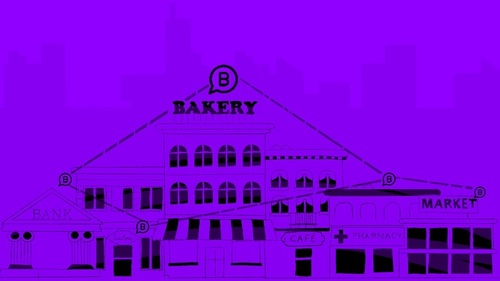Long endless queues, non-cooperative clerks, passing from one counter to another till you land on the correct counter by chance — that's been the common experience of visiting a bank in the early 1990s in India (and, it's still the same in many public sector banks!).
It's tedious, it's boring, it's exhausting. It's just lazy banking, where customer service, technology or even progress is never prioritised.
But in 1994, when India's status quo was lazy banking, a young private bank, HDFC Bank, was born with a goal to completely change the norm.
It prioritised innovation & technology with a crisp balance sheet. Fast forward to today:
- HDFC is the largest private lender in India
- With the highest market capitalization of any Indian bank: ~$100 billion
- And, generates more profits than SBI, while only making half its total income
a. HDFC
➝ Total income = $19.5 billion dollar
➝ Profit = $4.6 billion dollarsb. SBI
➝ Total income = $39.5 billion dollars
➝ Profit = $3.9 billion dollars
Under the leadership of Aditya Puri, HDFC was essentially run like a "startup". And, its journey is a case study on how a new player can beat the giants in a crowded market. So, let's dive in!
How did HDFC begin in post-1991 India?
Economic Reform: The need of the hour
HDFC was born in the aftermath of the economic liberalisation of India.
In 1991, India was suffering through an economic crisis due to heavy reliance on imports. Then Prime Minister, Narasimha Rao, and his finance minister, Manmohan Singh, implemented a stream of economic reforms, with an 'inclination to privatization' as the core theme.
As part of the reform, RBI was looking into licensing more private banks in the hope of introducing some healthy competition in the banking sector and squashing the lazy banking phenomenon!
Building the dream team
At the same time, Deepak Parekh, the chairman of housing finance giant, HDFC, got increasingly interested in starting their own bank.
He went hunting for seasonal bankers with loads of experience. The first catch was Aditya Puri who was then working as Citi Bank CEO in Singapore.
For Aditya Puri, moving from a stable high-income bank to a new startup in the Mumbai suburbs meant a major downgrade in income and lifestyle. But, Deepak's promise of an exciting journey, and a sizeable stock option had Puri convinced.
Aditya Puri was all set to buildd a bank with a very specific vision.
So he started to recruit the early team of India's finest bankers that knew all the ins and outs of running a bank and more importantly who believed in his vision. Which in hindsight made HDFC an infallible venture.
Lesson ➝ For a startup, the biggest hiring problem isn't finding talented folks, but those who actually CARE about what you are building.
With RBI's blessing & 100 Cr capital and backed by HDFC (Housing Finance Development Corporation), HDFC bank began its journey in 1994 in the suburbs of Mumbai!
Basics of Banking — How does a bank work?
Now building a bank from scratch is no easy task. You are dealing with crores in capital on the go. And the pressure of generating profits and value for shareholders.
But, nevertheless, the basics remain the same. So, let's understand how a bank works!
- Say, 50 people deposit INR 50,000 in their HDFC savings accounts.
So, HDFC has a deposited amount of ⇒ INR 50,000 x 50 = INR 25,00,000
- Now, HDFC keeps a part of this amount in cash, so whenever a customer wants to withdraw an amount they are able to. This is decided by the cash reserve ratio.
Let's say, HDFC keeps 5% of the amount liquid, that is ⇒ 5% 25,00,000 = 1,25,000
- The bank lends the rest (25,000,000 - 1,25,000 = 23,75,000) to either retailers or corporations as loans.
Now, banks only have to give a small 2-3% of interest on deposits & receive a higher 9-10% (average) interest on the loans they give out.
So, essentially the money made is a difference between the two points:
Profits ⇒ Interest expense on deposits + Interest revenue on loans ⇒ (-) 3% x 25,00,000 + (+) 9% x 23,75,000 ⇒ INR 1,38,000
In this case, HDFC makes INR 1,38,000 in profits. Now, of course, the balance sheet of HDFC is more nuanced than this. Plus there is a problem of defaults — people who fail to pay back loans.
So, the entire job of a bank is to mitigate risk and manage the deposits and loans to generate net profit!
First move: Capture the blue-chip corporate sector!
After resigning from Citi and before landing in Mumbai, Aditya Puri had spent 2-3 months drafting a blueprint of HDFC's early strategy.
The plan was 2 fold. You see, in the early 1990s:
A) Foreign banks offered a range of diversified products & services, innovative & personalized solutions and good customer service.
B) On the other hand, public sector banks (PSUs) had the advantage of large distribution networks, relationships with customers and huge capital.
Puri's plan was to buildd a bank that combines both these sides, that is have a diversified range of products and the benefits of large distribution networks. But, without a balance sheet and existing branch network, the best way to start was to start small.
So, HDFC first got into only lending triple-A-rated (AAA), blue chip and more importantly profitable corporations like Seimens, Birlas, Amabanis and Tatas. That meant
- the bet was low risk
- but, the space was also super competitive
So, to stand out, they developed products and services specific to these companies. For example:
- HDFC provided Asian Paints with a service that allowed them to have all their vendors online. Plus they offered these vendors loans at a relatively cheaper rate.
- For the Tatas, convenience and quick delivery to their monetary needs were important. HDFC not only provided that but they drew up an entire supply chain for Tata motors.
Apart from these instances, HDFC also created large-scale solutions for some very common problems. Let's look at some of the examples.
Problem #1 — Long cheque settlement cycles
Here's how it goes — Co-operative banks in India are basically restricted to operating in only a particular state. So, all their customers and branches are from that state.
This was a problem because:
- Let's say person A in Gujarat sends a co-operative bank cheque to his supplier in Maharashtra.
- Now the co-operative bank is only present in Gujarat while the supplier deposits his cheque in Maharashtra in ICICI bank.
- So, ICICI bank would have to send the cheque to their Gujarat branch to settle the transaction.
- The whole process in the 1990s would take 3-4 days.
HDFC Bank came up with a simple solution for this. It started issuing cheques to the cooperative banks that could be settled at the local HDFC bank instead of the inter-state transfer.
In turn, these co-operative banks had to place an interest-free deposit amount with HDFC. This essentially gave HDFC cash with no interest expense.
Problem #2 — Stock trading settlements
In the mid-1990s the buying and selling of stock was a long multi-layered process, that looked something like this:
Customer ⇒ Broker A ⇒ Exchange ⇒ Broker B ⇒ Company
So, every time a customer bought a stock the cheque would have to pass through all these entities. More importantly, all the settlements happened once a week, so the risk for an entire week would carry on at the end.
The exchanges (National Stock Exchange and Bombay Stock Exchange) had no way to confirm if the settlement would go through smoothly. That is each entity has the money needed to clear the cheque.
HDFC came up with a simple solution for this problem. They built a close-knit group of exchanges and brokers and provided them with a real-time system where an exchange can check if the payment broker has enough money for the payment to go through. On top of that, they also provided instant settlement.
This required all brokers and exchanges to create clearing and settlement accounts with HDFC. So, the trading settlement issues are resolved while HDFC captures all these accounts with one masterstroke. Quite a win-win situation!
Now, HDFC's team had former corporate bankers. They already had banking connections and it helped them bag deals with these blue chip companies.
Despite this advantage, HDFC was a startup in the early days with no history or credibility. So, they had to buildd TRUST slowly, delivering every single time.
We can learn a few things here!
- Discovering competitors for your startup idea is a validation of the market, NOT a source of sadness.
- DON'T build startups based on popular trends. Build one that solves real customer problems.
Next Move ⇒ Enter the retail sector
Now, targeting the triple-A-rated companies and giving custom solutions to co-operative banks and exchanges had worked well for HDFC. But, one thing was clear, you cannot become a large bank by just lending to huge corporations.
The major chunk of opportunity in a developing market like India was in the retail sector.
The current and savings accounts (CASA) are goldmines to any bank. They are low-cost deposits, meaning banks don't have to spend too much interest on them. Plus, the retail lending sector for car and 2-wheeler loans, house loans etc is huge!
But, HDFC approached their move into the retail sector with a sense of caution and rapid experimentation. Before entering a space, say car loans, HDFC would run a pilot to check the intricacies of each space and understand the risk involved. If things went well, they would move on to rapid rollout. But, if the risk-to-reward ratio is too high then they'd exit the space.
Lesson ➝ When building something new, always think about a pilot run first. Launch a version of the product, get feedback, iterate & build on top of it.
Once they cracked a process, they'd scale it with rapid and near-perfect execution.
Risk vs Reward: HDFC Bank's SECRET to massive profits!
At the end of the day, HDFC absolutely excels at execution. And, that's been their main edge from day 1. Tatas, Birlas and Ambanis trusted HDFC with their money because they knew the company would deliver.
But, in the case of HDFC, that's not the end of the story. HDFC's stellar balance sheet and high profits are all thanks to its incredible risk management.
Deepak Parekh eloquently explains HDFC's lending ethos, 'First Principle ⇒ Always lend money on customer's cashflow and not asset value. The same thing can be applied to personal loans as well.'
Like J Paul Getty once said, "If you owe the bank $100, that's your problem. If you owe the bank $100 million, that's the bank's problem."
Owing to its risk management ethos, HDFC is able to have some of the lowest non-performing asset percentages of 0.32% whereas ICICI and SBI have a net NPA of 0.76% & 1.02%!
But, even after reaching such heights, there is still no hint of complacency visible in HDFC's team. Aditya Puri was of the firm belief that all companies run out of leverage gained from their past innovations within 3-4 years as the market catches up.
So, we can surely expect BIG things for this bank in the near future!







.jpg)
